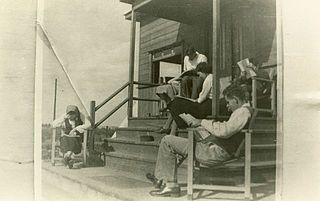Eilon
Place in Northern, Israel From Wikipedia, the free encyclopedia
Place in Northern, Israel From Wikipedia, the free encyclopedia
Eilon (Hebrew: אֵילוֹן) is a kibbutz in northern Israel. Located a mile south of the Lebanese border and six miles east of the Mediterranean coast, the kibbutz is situated in the Western Galilee on a ridge between two streams, Nahal Betzet and Nahal Kziv. It falls under the jurisdiction of the Mateh Asher Regional Council. As of 2022 it had a population of 1,111.[1].
Eilon | |
|---|---|
| Hebrew transcription(s) | |
| • official | Elon |
 | |
| Coordinates: 33°3′49″N 35°13′14″E | |
| Country | |
| District | Northern |
| Council | Mateh Asher |
| Affiliation | Kibbutz Movement |
| Founded | 1938 |
| Founded by | Polish Jews |
| Population (2022)[1] | 1,111 |
The name "Eilon" is derived from the Hebrew words Elah (pistachio) and Alon (oak), two tree species abundant in this heavily forested area of northern Israel, though specifically referred to the "remnants of ancient trees in the vicinity."[2] The Polish-Jewish immigrants cleared the forest and planted orchards for edible crops that would grow on a rocky hillside, to feed the small population .[3]

The kibbutz, situated a short distance from the Lebanese border, was established in 1938 on 400 dunams of land in Khirbet Samak, which had been purchased by the Jewish National Fund.[4] It was settled that year by a group of Polish immigrants and Palestinian Jews.[2] The inhabitants found themselves under constant fire in the wake of the 1936–1939 Arab revolt in Palestine.[2] Eilon was one of the early tower and stockade settlements.
By 1947 the kibbutz had a population of 350, successfully reclaiming rocky land that had been designated by the British Mandatory government as uncultivable. The kibbutz was initially affiliated with Hashomer Hatzair.[2] Calm was achieved after the Galilee was cleared of Lebanese troops and Kaukji's bands in November 1948. When the Israeli forces, having just occupied the town of Tarshiha appeared coming up the path the inhabitants defending the kibbutz could hardly believe their good fortune.[5]
| Climate data for Eilon (1991–2020) | |||||||||||||
|---|---|---|---|---|---|---|---|---|---|---|---|---|---|
| Month | Jan | Feb | Mar | Apr | May | Jun | Jul | Aug | Sep | Oct | Nov | Dec | Year |
| Record high °C (°F) | 28.0 (82.4) |
30.2 (86.4) |
36.7 (98.1) |
39.9 (103.8) |
40.6 (105.1) |
41.5 (106.7) |
40.1 (104.2) |
40.1 (104.2) |
40.3 (104.5) |
39.8 (103.6) |
34.6 (94.3) |
30.5 (86.9) |
41.5 (106.7) |
| Mean daily maximum °C (°F) | 16.4 (61.5) |
17.3 (63.1) |
20.0 (68.0) |
23.7 (74.7) |
27.1 (80.8) |
29.2 (84.6) |
30.7 (87.3) |
31.3 (88.3) |
30.4 (86.7) |
28.2 (82.8) |
23.4 (74.1) |
18.6 (65.5) |
24.7 (76.5) |
| Daily mean °C (°F) | 12.5 (54.5) |
13.1 (55.6) |
15.4 (59.7) |
18.5 (65.3) |
21.8 (71.2) |
24.1 (75.4) |
25.9 (78.6) |
26.5 (79.7) |
25.5 (77.9) |
23.3 (73.9) |
18.9 (66.0) |
14.6 (58.3) |
20.0 (68.0) |
| Mean daily minimum °C (°F) | 8.6 (47.5) |
8.8 (47.8) |
10.7 (51.3) |
13.2 (55.8) |
16.4 (61.5) |
18.9 (66.0) |
21.0 (69.8) |
21.7 (71.1) |
20.6 (69.1) |
18.4 (65.1) |
14.4 (57.9) |
10.6 (51.1) |
15.3 (59.5) |
| Record low °C (°F) | 0.0 (32.0) |
−1.8 (28.8) |
2.4 (36.3) |
2.7 (36.9) |
9.7 (49.5) |
12.8 (55.0) |
17.2 (63.0) |
17.8 (64.0) |
15.5 (59.9) |
10.4 (50.7) |
5.3 (41.5) |
1.5 (34.7) |
−1.8 (28.8) |
| Average precipitation mm (inches) | 216.9 (8.54) |
147.7 (5.81) |
84.7 (3.33) |
38.8 (1.53) |
13.5 (0.53) |
3.4 (0.13) |
0.4 (0.02) |
0.0 (0.0) |
5.5 (0.22) |
33.5 (1.32) |
99.4 (3.91) |
171.9 (6.77) |
815.7 (32.11) |
| Average precipitation days (≥ 1.0 mm) | 12.3 | 10.1 | 7.2 | 3.6 | 1.8 | 0.4 | 0.1 | 0.0 | 0.7 | 3.6 | 6.0 | 10.3 | 56.1 |
| Source: NOAA[6] | |||||||||||||

Eshet Eilon is a privately-owned production plant which manufactures agri-industrial systems to sort vegetables and fruit.
There are a few small workshops in Eilon, among them: Eilon Mosaic which manufactures decorative mosaic; A recording studio, A studio of traditional Japanese carpentry, and a studio for building Mizrahi (oriental) musical instruments.
Eilon houses an archaeological collection of artefacts dating back to the Neolithic and Chalcolithic periods, as well as from the Iron Age, and which were salvaged principally from the ruin Khirbet Jelĩl, near Moshav Goren.[7]
Seamless Wikipedia browsing. On steroids.
Every time you click a link to Wikipedia, Wiktionary or Wikiquote in your browser's search results, it will show the modern Wikiwand interface.
Wikiwand extension is a five stars, simple, with minimum permission required to keep your browsing private, safe and transparent.